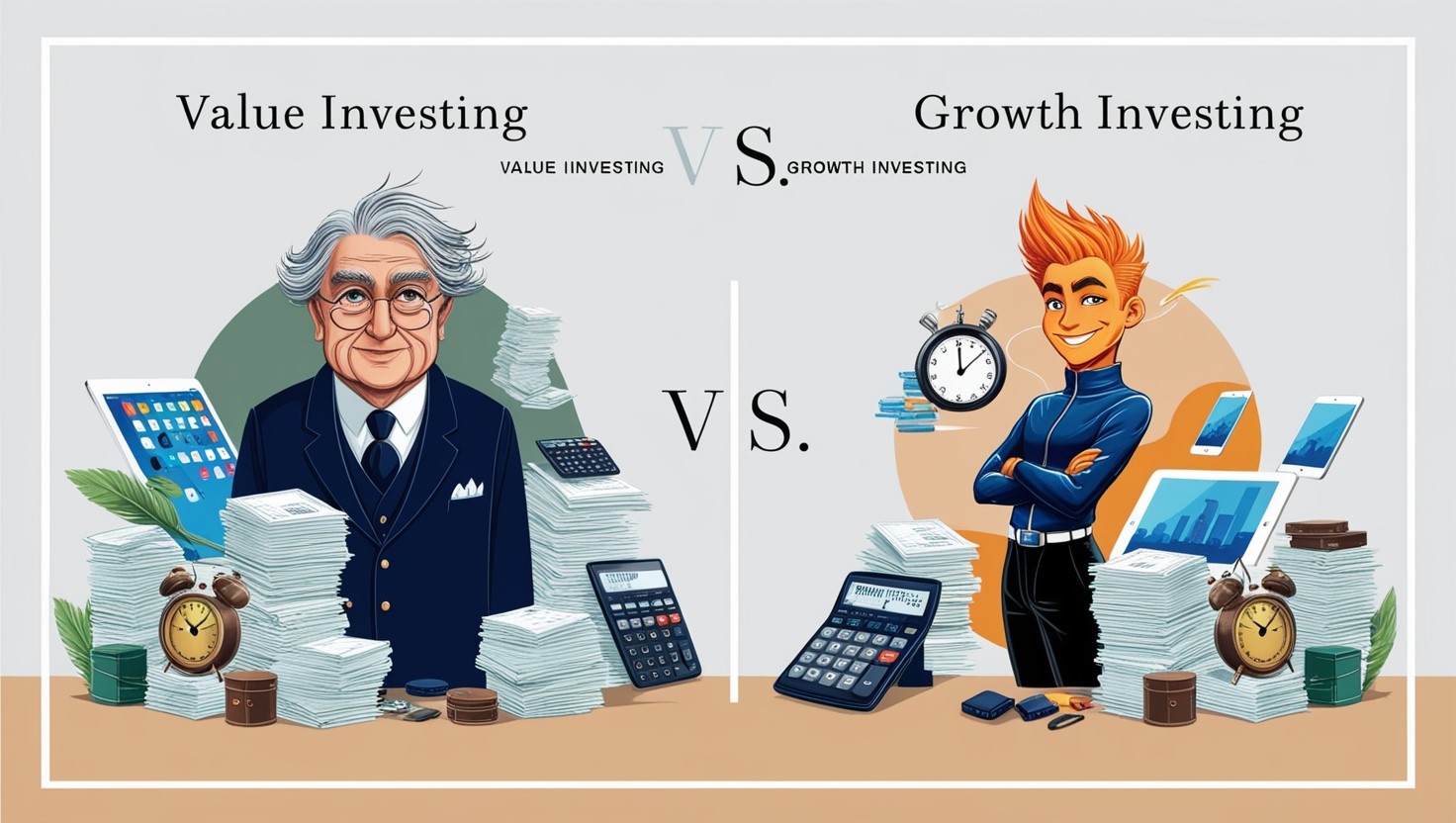When it comes to investing, there are two main strategies that often stand out: value investing and growth investing. Understanding the difference between these approaches is key to shaping your investment decisions. Value investing focuses on finding stocks that appear to be undervalued by the market, while growth investing targets companies with potential for rapid expansion and increasing profits. Both strategies have their merits, but they appeal to different types of investors depending on goals, risk tolerance, and market outlook.
What is Value Investing?
Value investing is a strategy that focuses on finding stocks that are trading for less than their intrinsic value. Investors who follow this approach look for companies that the market has undervalued, whether due to short-term challenges or broader market trends. The goal is to buy these stocks at a discount and hold them until their true value is realized. Value investors typically prioritize strong fundamentals—such as solid earnings, dividends, and low price-to-earnings ratios—and are often patient, waiting for the market to correct itself.
A famous example of value investing success is Warren Buffett‘s investment in Coca-Cola. In 1988, Buffett’s company, Berkshire Hathaway, began buying shares of Coca-Cola when the stock was undervalued due to short-term market factors. He recognized the company’s strong brand, solid fundamentals, and long-term potential. By holding onto Coca-Cola shares for decades, Buffett saw immense returns as the stock price rose and the company continued to grow. His disciplined, patient approach exemplifies the core principles of value investing.
What is Growth Investing?
Growth investing focuses on identifying companies that show strong potential for future expansion and profit increases. Unlike value investors who seek undervalued stocks, growth investors target companies that are already performing well and are expected to grow even more. These companies often reinvest profits back into the business, resulting in higher stock prices over time. Growth investors are typically less concerned with current stock valuations and more focused on future earnings potential. This strategy can lead to higher returns but often involves greater risk due to market volatility.
A great example of successful growth investing can be seen with Vanguard and BlackRock investing in Nvidia. Both firms identified Nvidia’s significant growth potential in the tech industry, particularly in AI, gaming, and data centers. As demand for Nvidia’s graphics processing units (GPUs) surged, so did its stock value. These firms increased their stakes as Nvidia expanded its market reach and profitability, making it a cornerstone of their growth investment strategy. This long-term investment has resulted in substantial returns for both Vanguard and BlackRock.
Risk and Reward
Both value and growth investing come with distinct risks and rewards.
- Value investing typically carries lower risk since investors are buying stocks they believe are undervalued, creating a margin of safety. However, value stocks can take time to realize their true potential, meaning investors may need to be patient.
- Growth investing, on the other hand, offers the potential for higher returns but comes with greater volatility. Growth stocks can rise quickly, but their high valuations also mean they may fall sharply if expectations aren’t met.
Investment Time Horizon
The investment time horizon plays a significant role in determining whether value or growth investing is more suitable for an individual.
- Value investing often requires a longer time horizon because it relies on the market recognizing and correcting the undervaluation of a stock. Investors in value stocks may need to wait several years for their investments to reach full potential.
- Growth investing, however, can sometimes yield quicker returns as companies in rapid expansion phases may see their stock prices rise sooner.
Economic Conditions and Market Cycles
The performance of value and growth investing can be heavily influenced by economic conditions and market cycles.
- Value investing tends to outperform during economic downturns or recessions when stock prices are low and undervalued companies have room to recover.
- On the other hand, Growth investing thrives in booming economies when companies experience rapid expansion and earnings growth. During times of high interest rates or inflation, growth stocks may face pressure due to higher borrowing costs, while value stocks tend to be more resilient in such environments.
Final Thoughts: Which Strategy is Right for You?
Choosing between value and growth investing depends on your personal goals, risk tolerance, and time horizon. Value investing is ideal for those who prefer a more conservative approach, looking for steady returns over the long term and are willing to wait for the market to recognize undervalued stocks. Growth investing suits individuals who are comfortable with higher risks and seek faster, potentially larger returns by betting on companies with high growth potential. Many investors combine both strategies for diversification.



